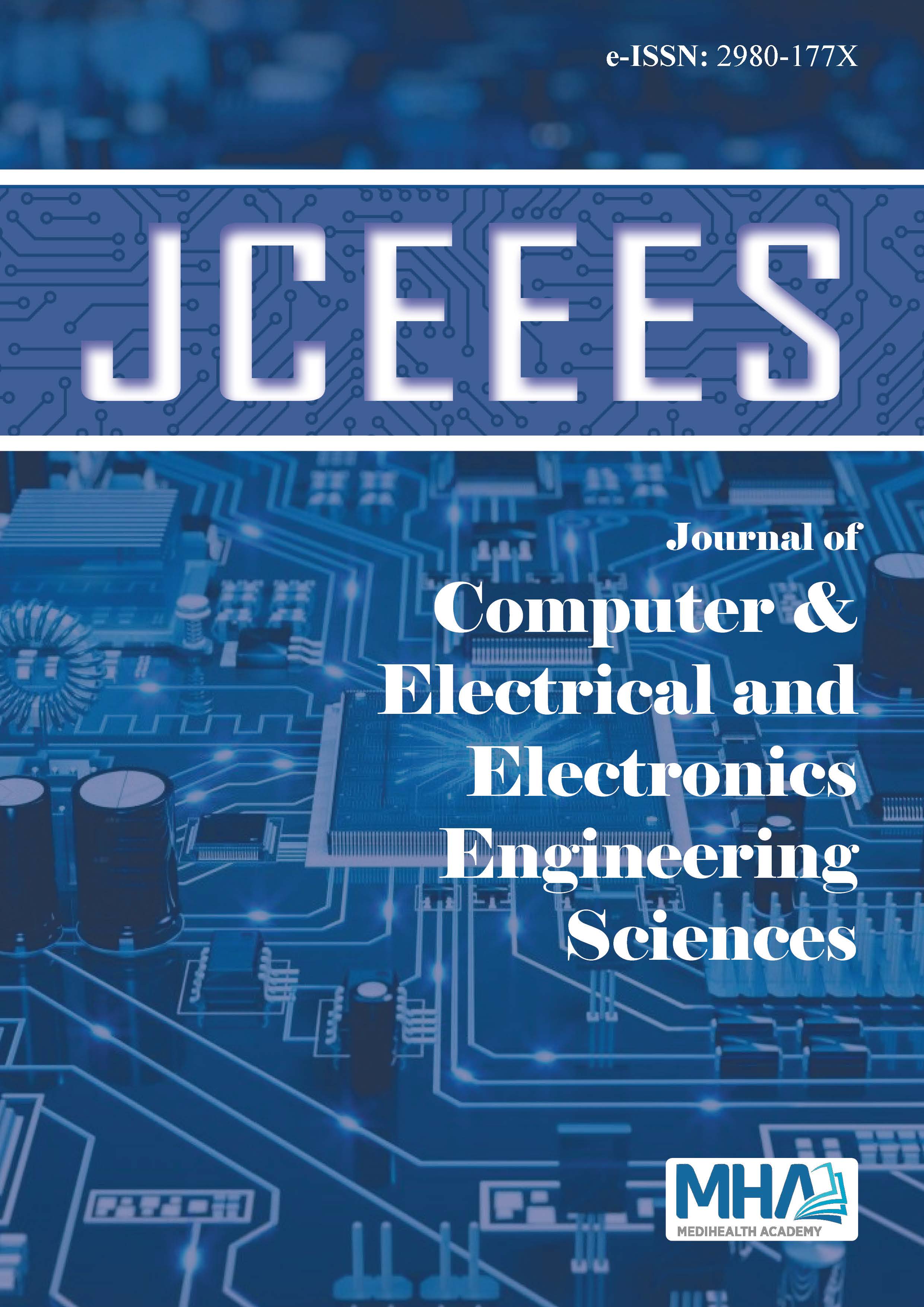1. Angelov, G., Andreev, M., & Hinov, N. (2018, May). Modeling ofelectric vehicle charging station for DC fast charging. In 2018, the 41stInternational Spring Seminar on Electronics Technology (ISSE) (pp.1-5). IEEE.
2. Arca, D., & Keskin Çıtıroğlu, H. (2022). Güneş enerjisi santral (GES)yapım yerlerinin CBS dayalı çok kriterli karar analizi ile belirlenmesi:Karabük örneği. Geomatik, 7(1), 17-25.
3. Bayrak, G., & Cebeci, M. (2012). 3.6 kW gücündeki fotovoltaikgeneratörün matlab simulink ile modellenmesi. Erciyes Üniversitesi FenBilimleri Enstitüsü Fen Bilimleri Dergisi, 28(3), 198-204.
4. Bekar, N. (2020). Yenilenebilir enerji kaynakları açısından Türkiye’ninenerji jeopolitiği. Türkiye Siyaset Bil Derg, 3(1), 37-54.
5. Çalışkan, A., Ünal, S., & Orhan, A. (2017). Buck-boost dönüştürücütasarımı, modellenmesi ve kontrolü. Fırat Üniv Mühend Bil Derg, 29(2),265-268.
6. Çetintaş, H., Bicil, İ. M., & Türköz, K. (2017). Türkiye’de enerjiüretiminde fosil yakıt kullanımı ve CO2 emisyonu ilişkisi: bir senaryoanalizi (No. 2017-002, pp. 1-12). EconWorld Working Paper Series.
7. Dericioglu, C., Yirik, E., Unal, E., Cuma, M. U., Onur, B., & Tumay,M. (2018). A review of charging technologies for commercial electricvehicles. Int J Advanc Automotive Technol, 2(1), 61-70.
8. Dogra, A., & Pal, K. (2014). Design of buck-boost converter for constantvoltage applications and its transient response due to parametricvariation of pi controller. Int J Innovat Res Sci Engineering Technol, 3(6),13579-13588.
9. Eckel, H. G., Bakran, M. M., Krafft, E. U., & Nagel, A. (2005). A newfamily of modular IGBT converters for traction applications. In2005European Conference on Power Electronics and Applications(pp. 10-pp).IEEE.
10. Gelman, V. (2014). Why there are no IGBT traction rectifiers? In Proc. ofJoint Rail Conference, Colorado Springs, CO, United States.
11. Gürbüz, İ. B., Özkan, G., & Korkmaz, Ş. (2023). Kırsal kesimdeyaşayanların yenilebilir enerji kaynakları ve çevre bilinci üzerine biraraştırma. Türk Tarım Doğa Bil Derg, 10(1), 187-195. doi: 10.30910/turkjans.957062
12. IEC. (2010). 61851-1: Electric vehicle conductive charging system-part 1: General requirements. IEC (International ElectrotechnicalCommission), Geneva, Switzerland.
13. İşen, E. (2021). Comparative study of single-phase PWM rectifiercontrol techniques. Mugla J Sci Technol, 7(1), 44-51.
14. Karamanav, M. (2007). Güneş enerjisi ve güneş pilleri (Dissertation).Sakarya University, Turkey.
15. Karabaş, A., & Mengi, O. Ö. (2019). Fotovoltaik güneş panelleriiçin farklı MGNİ teknikleri kullanılarak bir şarj regülatörününperformansının incelenmesi ve karşılaştırılması. Karadeniz Fen Bil Derg,9(1), 152-175.
16. Khalil, G. (2009). Challenges of hybrid electric vehicles for militaryapplications. In 2009 IEEE Vehicle Power and Propulsion Conference,(pp. 1-3).
17. King, D. L., Kratochvil, J. A., & Boyson, W. E. (2004). Photovoltaic arrayperformance model (Vol. 8). United States. Department of Energy.
18. Liu, Z., Xie, Y., Feng, D., Zhou, Y., Shi, S., & Fang, C. (2019). Loadforecasting model and day-ahead operation strategy for city-located EVquick charge stations.
19. Mouli, G. R. C., Bauer, P., & Zeman, M. (2016). System design for asolar-powered electric vehicle charging station for workplaces. Appl.Energy, 168, 434-443.
20. Mouli, G., Venugopal, P., & Bauer, P. (2017). Future of electric vehiclecharging. 2017 International Symposium on Power Electronics (Ee). pp.1-7. Available: 10.1109/pee.2017.8171657 [Accessed 10 December 2019].
21. Ozcalik, H. R., Yilmaz, S., & Kilic, E. (2013). Güneş pilinin bir diyotlueşdeğer devre yardımıyla matematiksel modelinin çıkartılması veparametrelerinin incelenmesi. Kahramanmaraş Sütçü İmam ÜnivMühendislik Bil Derg, 16(1), 23-29.
22. Öymen, G. (2020). Yenilenebilir enerjinin sürdürülebilirlik üzerindekirolü. İst Tic Üniv Sos Bil Derg, 19(39), 1069-1087.
23. Saber, C. (2017). Analysis and optimization of the conducted emissionsof an on-board charger for electric vehicles. Doctoral dissertation,Université Paris Saclay.
24. Sutopo, W., Nizam, M., Rahmawatie, B., & Fahma, F. (2018). A reviewof electric vehicles charging standard development: study case inIndonesia. In 2018 5th International Conference on Electric VehicularTechnology (ICEVT) (pp. 152-157). IEEE.
25. Tie, S. F., & Tan, C. W. (2013). A review of energy sources and energymanagement system in electric vehicles. Renewable Sustainable EnergyRev, 20, 82-102.
26. URL-1. (2021). Sources of Greenhouse Gas Emissions. https://www.epa.gov/ghgemissions/sources-greenhouse-gas-emissions (Date of access:17.11.2023).
27. URL-2. (2022). Energy and Natural Resources Ministry, Sun. https://enerji.gov.tr/eigm-yenilenebilir-enerji-kaynaklar-gunes (Date of access:26.12.2023).
28. Yüksek, H. İ. (2019). Uzay vektör darbe genişlik modülasyonu yöntemiile üç faz üç seviyeli doğrultucunun matlab/simulink ortamındamodellenmesi (Dissertation). Sakarya Universitesi, Turkey.
29. Zhou, Z., Song, J., Yu, Y., Xu, Q., & Zhou, X. (2023). Research on high-qualitycontrol technology for three-phase PWM rectifier.Electronics,12(11), 2417.

